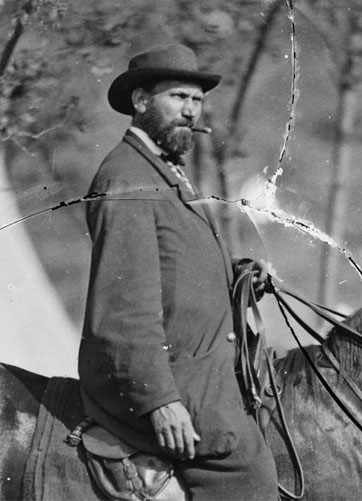The Civil War: What Happened and Why?
When Abraham Lincoln was elected President of the United States on the country he swore an oath to govern was so divided, it was like a gigantic powder keg ready to explode. But if you think the United States was ready to blow up just before all hell broke loose, and what we’ve come to call the Civil War began, you’d be right. The northern and southern states had very different ideas of how they wanted to be governed. Not only were they far apart geographically—the slave driven economy helped the south flourish, the north was far more industrialized and didn’t have legalized slavery—but leaders on both sides set fires that would burn for four long years.
By the way, back then, if you were born in say, Boston, chances are you you’d be there your whole life. And if you lived on a Georgia plantation, with cotton fields as far as you could see worked by men and women in bondage, you’d feel like it was normal and anywhere in the north was a world away. Most people stayed put – until the war came and fighting on farms, in fields and cities left a trail of blood that spread and spread until over six hundred thousand soldiers died and countless more, including civilians, were wounded.
Here is a quick rundown of some of the incendiary devices, the matches (called phosperous sticks back then) that finally ignited the flames:
*States had their own laws and didn’t want the Federal government telling them what to do, especially around the institution of slavery. Free states (those that didn’t have legalized bondage) thought the slaves states were dead wrong.
* The north was more industrialized. Big cities, lots more people. The south was more rural with an agrarian—cotton and tobacco crop-based—economy
* Abolitionists, the activist men and women who believed slaves should be free ASAP were perceived as a threat to the southern states and their way of life.
And of course, there was the election of Abraham Lincoln. Though he didn’t consider blacks and whites to be equals, he hated slavery and vowed to end it eventually. When he made his
famous “house divided” speech at his first inaugural on when he said, “we cannot endure half slave and half free,” little did he know that within weeks eleven southern states would secede to form their own nation, the Confederate States of America.
Additional Reading on the Civil War PDF Downloads
Spies in Hoop Skirts
For a woman to be a good spy in the Civil War she’d have to be fearless, dedicated, or just plain reckless. In or out of disguise, she was good at keeping and stealing secrets. She might be a teenager, a mother, sister or a wife. Whatever side she served, she was in a dangerous business. If she was captured the penalty was harsh: imprisonment or execution would likely be her fate, because as a spy she would have no protection under martial law. She lived with danger, knowing at any moment she might be unmasked. Whether she was a seducer, an eaves-dropper, a gun-toting code maker or code breaker, she lived on the edge – a different kind of soldier fighting in a war that lasted four long years and probably claimed at least one person she knew or loved.
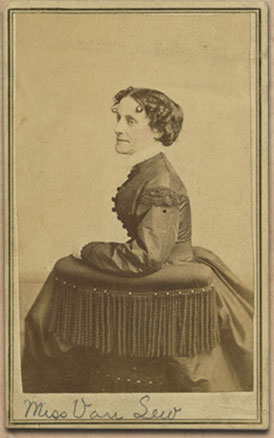
Elizabeth Van Lew: A famous female spy for the Union, keep reading about her.
For the Union
Courtesy of the Virginia Historical Society
Elizabeth Van Lew (1818-1900)
Elizabeth Van Lew was a tiny, birdlike southern belle, living in a mansion in Richmond, Virginia, the capitol of the Confederacy, and was Union General Ulyssess S. Grant’s most valuable spy. She loved her home state, but hated slavery more. “Slave power is arrogant,” she wrote, “is jealous and intrusive, is cruel, is despotic.” Educated at a Quaker school in Philadelphia, these abolitionist views put her at odds with her neighbors’ way of life well before the Civil War even began. In fact, she employed the family’s former slaves as spies, including her friend, Mary Elizabeth Bowser, who worked in the home of Confederate President Jefferson Davis. Elizabeth’s secret spy network in Richmond, consisting of businessmen, laborers, and former slaves, was vast and accomplished at furnishing intelligence to the Union throughout the war. She gathered intelligence from captured Union soldiers held at the infamous Libby Prison, often smuggling out their messages in false-bottomed egg baskets, or in hollowed-out shoe soles. She even hid escaping Union soldiers in a secret space in her attic. She was always in danger and under suspicion, but no one could ever prove she was a spy. Elizabeth continued her work until the end of the war. She chose to stay in Richmond, in her old mansion, in a city she loved. She was shunned by most of Richmond and labeled a traitor to the south for the rest of her long life. Elizabeth Van Lew risked everything – friends, fortune, comfort, health, and life itself – all for her one absorbing desire that slavery be abolished and the Union preserved.
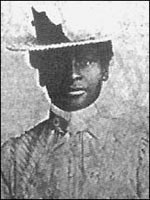 Mary Elizabeth Bowser
Mary Elizabeth Bowser
Photo provided by James A. Chambers U.S. Army Deputy, Office of the Chief, Military Intelligence
Mary Elizabeth Bowser (born Mary Jane Richards circa 1838) was a freed slave working in Elizabeth Van Lew’s household. As it was against the law to educate slaves in the south, Ms. Van Lew sent Mary to be educated in Philadelphia. After undergoing spy training, Mary was sent to work at the home of Confederate President Jefferson Davis. While there, she was able to read official documents and overhear important conversations, which she reported to Miss Van Lew and her spy network at great personal risk. She was said to have a photographic memory, an important asset for a spy!
Kate Warn
Kate Warn was the first female Pinkerton detective in American history. Shortly before the start of the Civil War in February, 1861, Kate was working undercover, embedded with Maryland secessionists outside Baltimore when she learned of a plot to assassinate President-elect Abraham Lincoln as he changed trains in Baltimore on his way to DC. Kate’s intelligence convinced her boss Detective Allan Pinkerton, who founded what would become the Secret Service, that the plot was real and that the president was in imminent danger. Pinkerton urged Lincoln to allow Kate to protect him as he traveled. Disguised as a sister and her invalid brother, Kate and Lincoln survived the train ride, escaping what would later be called the “Baltimore Plot.”
Pinkerton wrote a lot about Kate, a self-styled young “widow,” who came to his Chicago office with the nerve to answer his ad for a detective- not a clerk or secretary, as would have been usual and socially acceptable at the time. Amazingly, Kate’s true name and identity have eluded Civil War historians, genealogists, and students of spy craft for one hundred and fifty years, having been confused by the aliases she used throughout her life: Kate Warn, Kate Warne, Kate Warner, Mrs. Barley, Mrs. Cherry, Mrs. Warren, and lastly as she lay dying with something close to her real name, “Angie M. Warren.”
Kate’s experience was clearly very unusual. Most women living in the 19th century would not have nearly as many opportunities as women do today. If a girl lived in a city, she might be able to go to school- if one of the very lucky few, she might make it to college, become a teacher or governess, learn to play music, and possibly speak another language. More often, girls would get married young, become the property of their husbands, and raise children. Many women were illiterate, and none had the right to vote– so don’t take it for granted that you live in a world that encourages you to read and write!
For the Confederacy
Rose O’Neal Greenhow
Courtesy Library of Congress
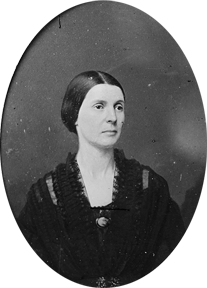 Perhaps the most notorious Confederate spy, Rose O’Neal Greenhow, a native of Montgomery County, Maryland, was beautiful, seductive and dangerous. A widowed Washington socialite before the Civil War, Rose had many friends in high places; ex-President James Buchanan and dozens of society’s elite frequented her elegant townhouse.
Perhaps the most notorious Confederate spy, Rose O’Neal Greenhow, a native of Montgomery County, Maryland, was beautiful, seductive and dangerous. A widowed Washington socialite before the Civil War, Rose had many friends in high places; ex-President James Buchanan and dozens of society’s elite frequented her elegant townhouse.
When the war began, Rose made no secret of her undying support for the Confederacy. Thomas Jordan, a dashing US army officer who was ready to join the Confederate army recruited Rose Greenhow to act as his informant and pass information to the Rebels whenever possible. It was a perfect fit. Rose hated Yankees and the “abolition North,” calling the American flag “the symbol of murder, plunder, oppression and shame.” Rose gathered information throughout the war, often from well-placed lovers, and with her own army of forty-eight female couriers– fanatically devoted young women willing to ferry Rose’s coded dispatches throughout the Capitol and across the lines– her spy network was formidable.
Even though she was arrested, Rose had the goods on so many DC bigwigs that she was not tried for treason. When she refused to take the Oath of Allegiance to the United States, she was exiled to the Confederacy and lauded by President Davis as a heroine: “The woman who helped defeat the Yankees at Bull Run.” Finally, Rose was given a large amount of money (gold coins) and sent on a secret mission to Europe for the Confederacy. While in Paris it is thought she tried to gather support for the Confederacy. After two years abroad, in August of 1864, Rose was smuggled aboard the Condor, a blockade running ship bound for the United States. Chased by Federal ships in the North Carolina waters, the Condor foundered sighting an enemy ship heading straight for it. Rose demanded a lifeboat but her clothing was so laden with gold coins, she drowned as waves broke over the craft. She was buried with Military honors and remains a beloved Confederate heroine to this day.
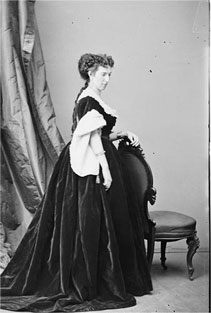 Belle Boyd
Belle Boyd
Courtesy Library of Congress
When she was seventeen, Belle Boyd shot a Union soldier who tried to take down a Confederate flag flying outside her home in Martinsburg, Virginia. “He spoke badly to my mother,” Belle allegedly told the shocked Federal officers who would keep her under close watch from then on. After Belle became too close to some of the officers, she was sent to her family in Front Royal, Virginia. Undaunted, using one of her female slaves as an assistant, Belle went to work as a courier, taking messages from one Confederate general to another during the 1862 Shenandoah Valley campaign. She was arrested by Union forces in 1862 and sent to the Old Capitol Prison. After being captured and released several times, Belle was again arrested in 1864 trying to send important Confederate papers to England. Shortly after, she went to Europe and married a Union naval officer, one of the very men who had previously arrested her.
In 1865, Belle became an actress and went on tour telling enraptured audiences about her escapades as a Confederate spy. Twice widowed, three times married, Belle died in Wisconsin in 1900. The Cleopatra of the Confederacy still thrills when her memoirs, Belle Boyd in Camp and Prison, are read by people of all ages. Civil War women spies ruled!
Timeline of the Civil War
1860
- November 6th, 1860 – President Lincoln is elected.
- December 20, 1860 – South Carolina secedes followed by
- Mississippi, Florida, Alabama, Georgia, Louisiana, Texas,
- Virginia, Arkansas, North Carolina, and Tennessee.
1861
- April 12, 1861 – Louisiana General Beauregard’s forces shell Fort Sumter – a Federal fort on the Charleston Harbor insisting the fort was now a part of the Confederacy. War is declared.
- April 15, 1861 – President Lincoln sends out the call for soldiers, volunteers who are asked to enlist for three months.
- April 19, 1861 – Lincoln blockades the South, forbidding trade by ship or train.
- May 21, 1861 – Richmond, Virginia is chosen as the Confederate Capital.
- July 21, 1861- Big doings at a little place called Manassas, Virginia. The Union army lost big and skedaddled back to DC.
1862
- February, 1862 – A lot of fighting in Tennessee ends with Union victories, a big show from General Ulysses Grant. These fights effectively cut supply lines to the Confederacy from the West.
- April 6, 1862 – Battle of Shiloh, Tennessee. Another Union victory.
- May 4th, 1862 – The first attempt to invade Richmond by General George McClellan’s forces. General Robert E. Lee’s Confederate forces stops the siege. If McClellan had succeeded, the war probably would have ended!
- Sept 17, 1862 – the Battle of Antietam at Sharpsburg. This little town sees 23, 100 men die in one day.
- December 11, 1862, McClellan is replaced by General Burnside. “Little Mac” was a guy who kept procrastinating!
1863
- May 18, 1863 – The Union siege of the Mississippi fort at Vicksburg lasts two weeks. Residents hide in caves to escape the constant shelling. Finally a Confederate surrender gives the Union control of the Mississippi River. That is a big deal!
- July 1, 1863 – Pennsylvania is invaded by Robert E. Lee. The battle of Gettysburg lasts for three days, killing 61,000 soldiers. Union victory. Back went Lee’s forces to Virginia. Gettysburg is often referred to as the turning point of the war.
- November 19, 1863 – Lincoln’s Gettysburg address. Check it out. Amazing speech. More Union victories followed.
1864
- March, 1864 – Grant is appointed head general of the Union forces, General William T. Sherman commands the West, General George G. Mead in the East.
- May-September, 1864 – Lees armies are surrounded. Sherman’s March to the Sea, a scorched earth policy meant to break the back of the Confederacy, begins.
- Sept 22, 1864 – Lincoln announces that he will issue an Emancipation Proclamation freeing all slaves held in Confederate states.
- November 8, 1864- Lincoln is reelected.
- January 1, 1864. The Emancipation Proclamation becomes official.
1865
- April 2, 1865 – The Union forces move on Richmond.
- April 9, 1865 – General Lee surrenders to General Grant at Appomatox Courthouse. The war is officially over although the last Confederate troops did not surrender until May 26, 1865.
- April 14, 1865 – President Lincoln is shot and killed at Ford’s Theatre by John Wilkes Booth.
